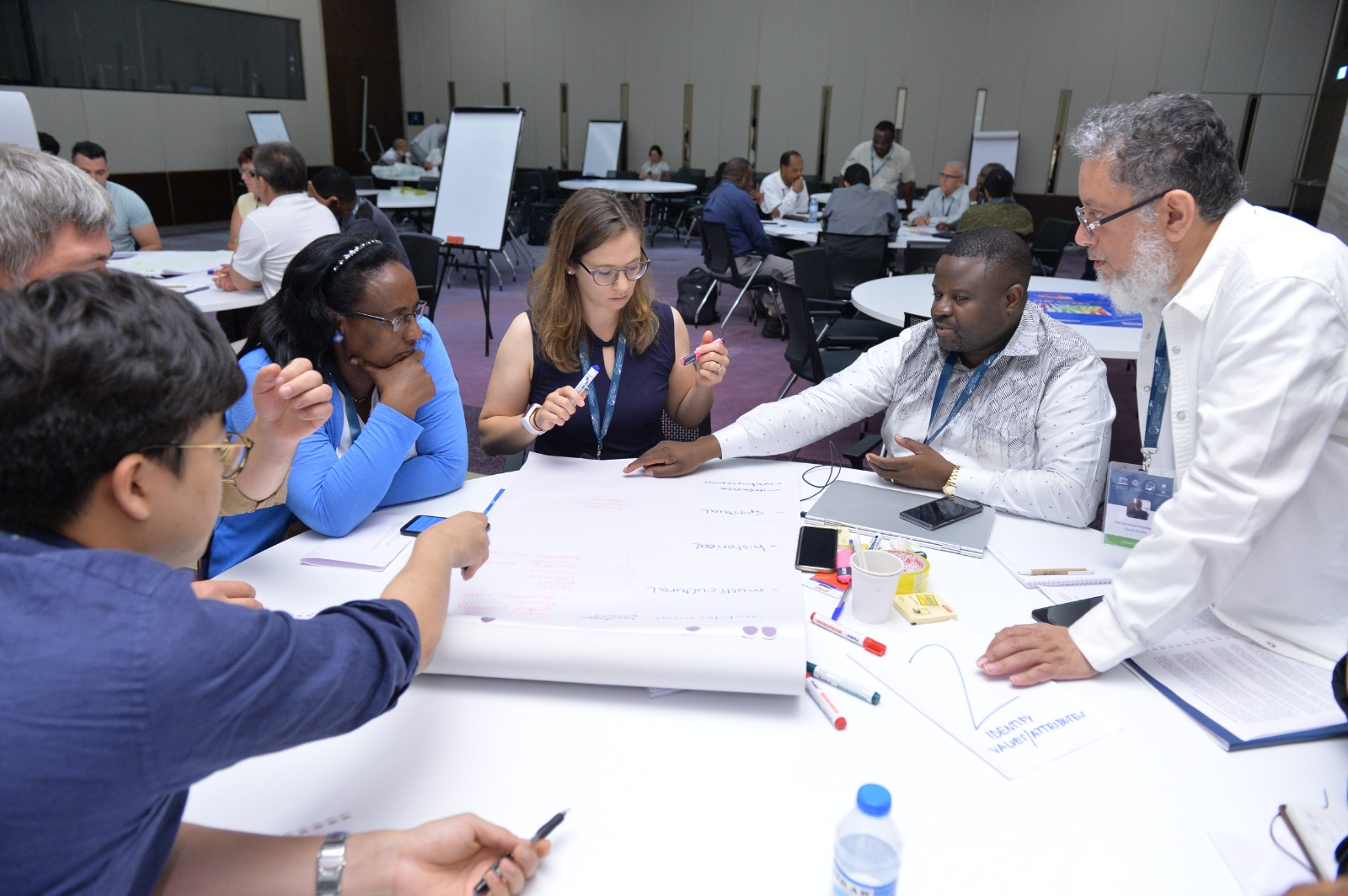Message from the Chair of SPICEH: rights-based conservation for social justice
CEESP News: Pasang Dolma Sherpa, PhD, Chair of IUCN CEESP Specialist Group on Indigenous Peoples, Customary & Environmental Laws, and Human Rights (SPICEH) & Director of Center for Indigenous Peoples’ Research and Development (CIPRED)
Indigenous women are the backbone of Indigenous Peoples’ communities. They provide protection and promotion of Indigenous knowledge, skills, traditional healing practices, cultural values (that are the foundation for nature-based solutions to climate change), protection of biodiversity, management of sustainable resources, and climate resilience. Indigenous women are not only breadwinners, caretakers, and leaders but are also knowledge holders and human right defenders.
Indigenous Peoples, representing 6.2 percent of the total population, contribute to safeguarding 80% of the world’s biodiversity. The recent 2022 IPCC report also highlighted the recognition of the rights of Indigenous Peoples (IPs) for forest adaptation and other actions to manage the climate crisis.
Indigenous Peoples suffer from intersecting levels of discrimination on the basis of gender, class, ethnicity, education, politics, identity, socioeconomic status and geography. Little attention or priority is given to the protection of Indigenous knowledge, cultural values and skills. Both modern education and development (i.e. in developing countries like Nepal) do not prioritize this matter. As a result, the knowledge and cultural values of Indigenous Peoples are on the verge of disappearing.
Indigenous Peoples have been protecting natural resources, biodiversity and surrounding ecosystems for generations through customary institutions and self-governance systems. The present forest regimes are structured around top-down laws, policies and programs, with little space for Indigenous Peoples’ and Indigenous women's voices. Consequently, the continued eviction of Indigenous Peoples from their territories, torture, and even death of IPs are becoming more commonplace practices, all in the name of conservation, national parks, and protected areas.
The following case study, from Nepal, illustrates the tension between conservation and the human lives that are stake:
According to statistics, three people are attacked by tigers every month in and around national parks and buffer zones in Nepal. In the last three fiscal years, 62 people have died in 104 tiger attacks reported inside national parks and buffer zones. Most recently on May 24, Kaushika Pal, 49-year-old single Indigenous women with two young children from Madhuban Municipality in Bardiya, was fatally attacked by a tiger while grazing her cows in the community forest. A week later, Asmita Tharu, 30, of the same village, was also attacked by a tiger while working in a field near her home. In response to the tigers' constant attacks, community members launched a protest demanding protection from wildlife. In the name of diffusing the protest, police opened fire, resulting in the death of Navina Tharu, 18, and bullet injuries by her siblings and several other people from the community.
Ashmita says “I am still young and can work in the fields and could do so much more work for the family but after this incident, I have lost my hopes to ever recover again and be able to work like before. The twenty thousand compensation money given is not enough for the damage it has caused to my future.” (Personal communication, 19 July, 2022).
The 30 by 30 initiative–created in the name of biodiversity and conservation–marks a scary moment to think and move ahead. Indigenous Peoples, particularly Indigenous women, have not only been afraid of losing their territories and cultural values, but are also wary of an unknown future for their little ones and family members. There have already been many cases and stories of Indigenous Peoples and women being forced to leave their ancestral territories and squeeze into new limited places. In these new environments, there is often not enough space to grow crops and vegetables to support families and the new area is often not conducive to the community’s spiritual and cultural values.
Thus, many Indigenous youth, not being able to follow in the footsteps of their parents, are forced to seek labor either in cities or foreign countries. Many of these individuals have died during the pandemic (take the story of Raj Kumar Chepang) as they were unable to find jobs in cities when everything shut down, nor could they go back to their homeland (many of which have been converted into national parks and conservation areas) where there are hardly any rights for Indigenous Peoples to continue their traditional livelihoods with self-respect and dignity.
Although the global discourse on climate change, conservation and biodiversity has started to prioritize the theme of Indigenous Peoples as guardians of forests and natural resources, this discourse is hardly reflected at the national level in Nepal. Therefore, Indigenous Peoples and women urge for a rights-based approach to conservation as a way to maintain traditional livelihoods while also offering a sustainable solution for the global crisis.



